
Courtesy of Sara Germain, Alaska Department of Fish and Game
Seabird die-off events were smaller than in previous years, but they remain a concern for subsistence communities that rely on marine resources.
In May 2020, the US Fish and Wildlife Service (USFWS) began receiving reports of dead and dying seabirds from the Bering Strait Region, with small die-off events continuing through September. The majority of species were puffins and murres, but also included shearwaters, kittiwakes and auklets. Birds examined from St. Lawrence Island were emaciated, however, the cause of death was also associated with a non-petroleum oil (vegetable, fish, or cooking oil) which was in the bird’s esophagus and lungs and on their feathers. To date, 320 seabird carcasses have been reported in 2020, which is lower than numbers reported in summers of 2017-2019. While the number of dead birds is comparatively low, it remains a concern for rural communities that rely on the marine ecosystem for subsistence.

Map provided by Coastal Observation Seabird Survey Team (COASST) coasst.org
Historically, seabird die-offs are not uncommon in Alaska, but were not reported from the Bering Strait Region. Since 2017, these events have occurred every year in the northern Bering and southern Chukchi Seas. In addition to frequency, these die-offs are unusual due to the number and variety of dead birds, broad geographic area affected, and the duration of the series of events over a summer.
The USFWS is coordinating with federal, state, tribal governments, and community members to report observations and collect carcasses for examination by the U.S. Geological Survey (USGS) National Wildlife Health Center. Of the 15 carcasses submitted, 12 were examined and all were emaciated and tested negative for Avian Influenza. Tissues collected during examinations will be analyzed for harmful algal bloom toxins by the USGS Alaska Science Center. Results of those analyses will be shared when they are available.
Downloadable Fact Sheet for 2020
Seabird species affected in 2020
-
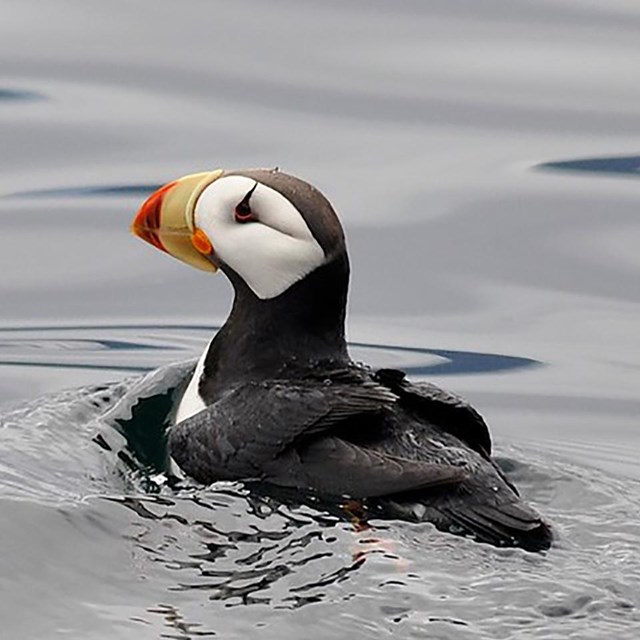 Horned Puffin
Horned PuffinEarly sailors named them "sea parrot" and "clown of the sea"
-
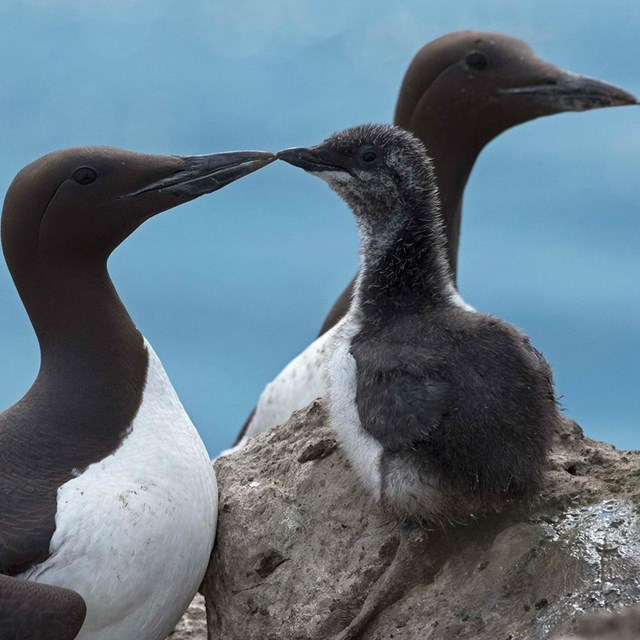 Common Murre
Common MurreIn winter Common Murres are found at sea, south of the ice edge, and on little islands in the Pacific.
-
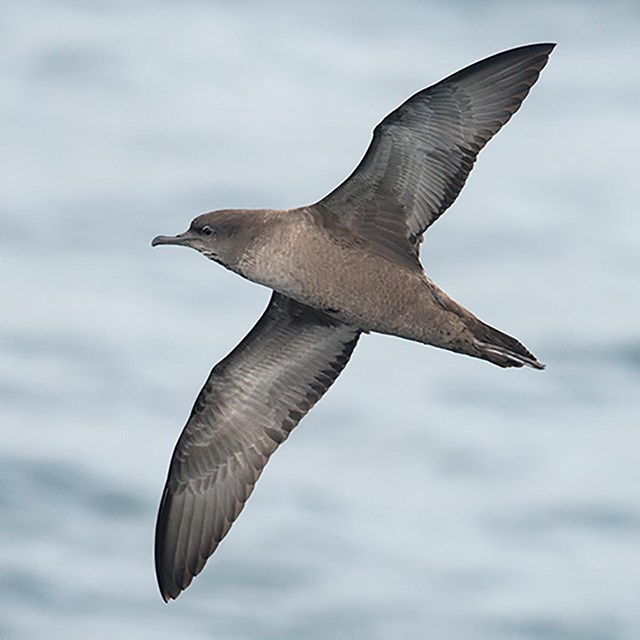 Short-tailed Shearwater
Short-tailed ShearwaterA trans-equatorial migrant known to make a 9,000 mile flight between Alaska and the Southern Hemisphere.
-
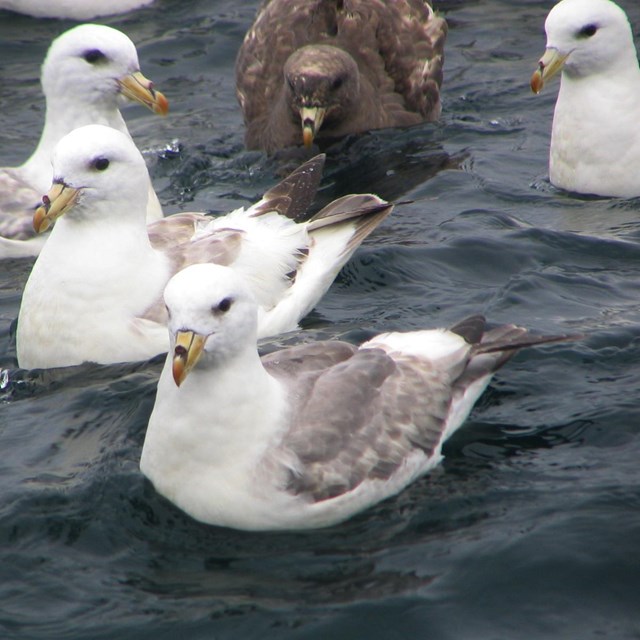 Northern Fulmar
Northern FulmarA truly pelagic species, the fulmar spends most of its life at sea and comes to land only to breed.
-
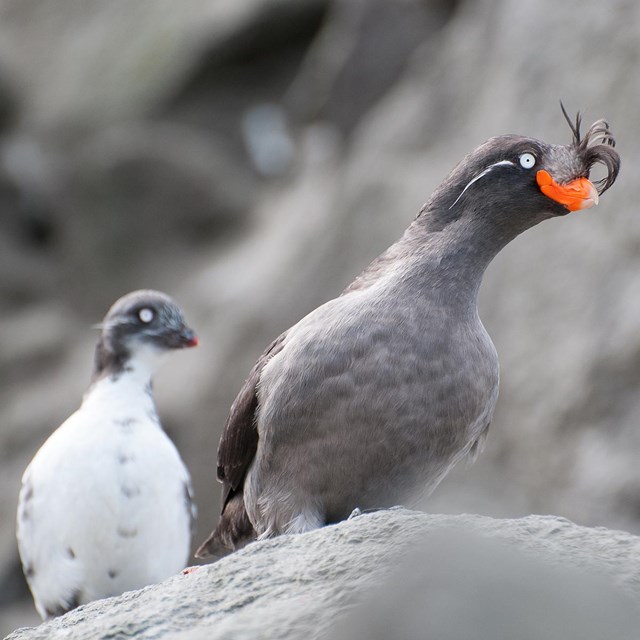 Crested Auklet
Crested AukletTheir distinctive tangerine odor and ornamental crest are attractive to their mates.
-
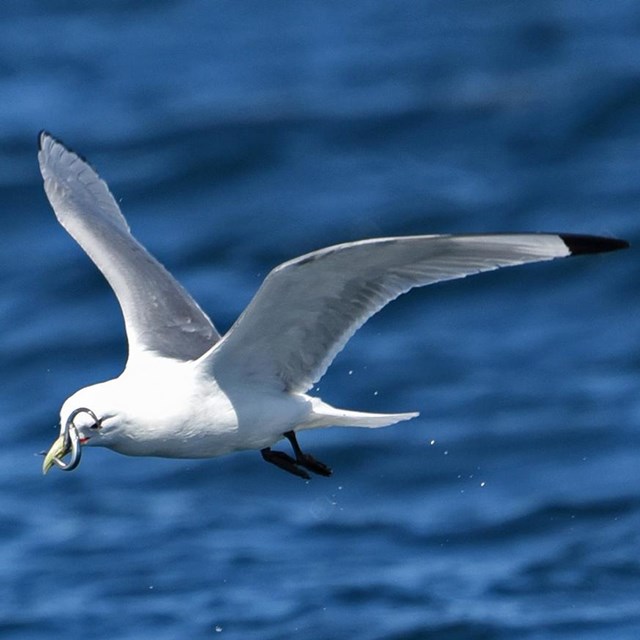 Black-legged Kittiwake
Black-legged KittiwakeThey nest on narrow cliff ledges, often barely wide enough to fit a nest and birds.
Photo Credits: Horned Puffin, NPS/J. Pfeiffenberger; Common Murres, USGS/S. Schoen; Short-tailed Shearwater, B. Alps; Northern Fulmars, USFWS/M. Romano; Crested Auklets USGS/G. Drew; Black-legged Kittiwake, USGS/S. Schoen.
Last updated: February 3, 2021
